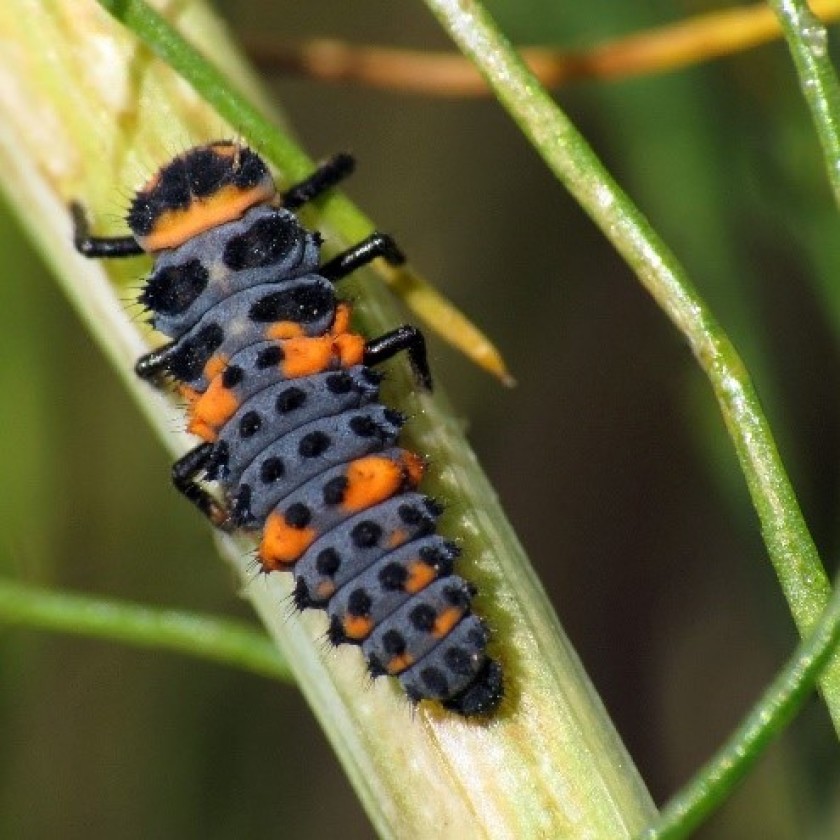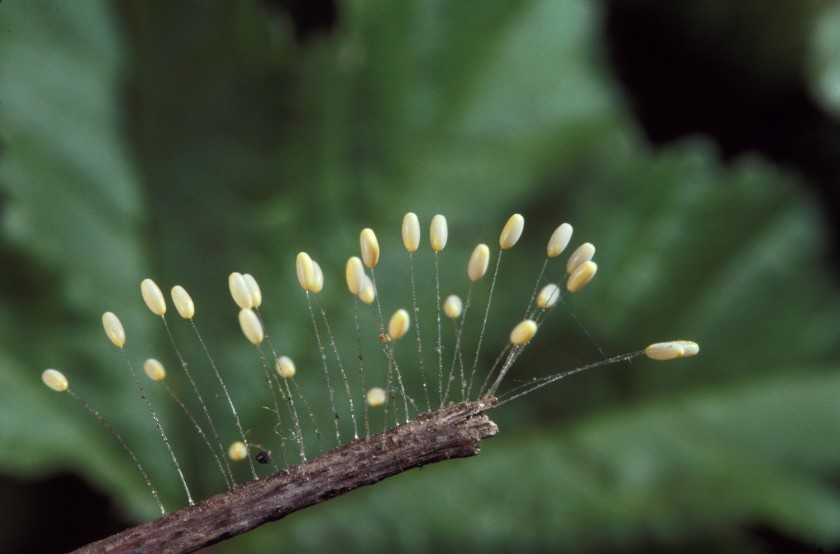Here’s how to identify and manage insect pests in your garden

An enlarged view of a ladybug larva, which eats aphids that suck the juice from your plants. It is a helper in your garden.(Regents of the University of California)
Summer is the “time of the garden,” when flowers are riotously blooming and fruit and vegetables are ripening. However, you may find you’re not the only one enjoying the fruits of your labors.
In order to support their next generation, many nonvertebrate pests, such as aphids and snails, may be eating leaves, dining on fruit, and sucking juices out of your plants.
How can you manage these pests? First, you must ask yourself: How much are you willing to share your garden with wildlife?
While there is no wrong or right answer to this question, all gardeners need to draw a line at the amount of damage they are willing to endure. A garden is an ecosystem of plants and animals, with many interdependent parts. Eliminating one or more elements can affect the entire system.
Begin by identifying what is damaging your plants. While birds and other animals may be the cause, in this article we’ll focus on insect pests. This can be a challenge, given the hundreds of insect species in San Diego. Many insects are beneficial to your garden, as they pollinate your plants, eat or parasitize harmful insects, and add to the overall enjoyment of your efforts. But other insects are destructive, such as the tomato hornworm — just one can destroy an entire tomato plant very quickly.
There are many resources to help you identify what is damaging your plant. If you can actually see the culprit on its damaged host plant, you can ask other gardeners’ advice, visit local certified nurseries (bring a sample in a closed plastic bag), or contact the San Diego Master Gardeners’ Hotline (858) 822-6910 from 9 a.m. to 3 p.m. weekdays for assistance.
You can also check the University of California Integrated Pest Management (IPM) website Pest Notes or the Plant Problem Diagnostic tool (both found at http://ipm.ucanr.edu/PMG/menu.homegarden.html). If you can see the damage but not the perpetrator, you can research via garden books, and at the University of California Integrated Pest Management (IPM) website.

Friend or foe? The eggs on the fiber stocks are Green Lacewing eggs. The larvae stage of this insect prey upon a large number of insect pests, making them beneficial in your garden.(Regents of the University of California)
After identification, your next step is to understand the life cycle of the pest and then weigh the benefits of controlling now against the benefits at a later life stage. For example, the aforementioned and dreaded tomato hornworm metamorphizes into the large sphinx moth, a nighttime pollinator important to pitahaya and other night-blooming plants. And many caterpillars are only present for a month or so before they become beautiful butterflies, so eliminating them after you have already picked most of your crop might not be worth your time and effort.
Like its name suggests, the IPM system uses an integrated method for managing pests of all types. Once you have chosen your source for pest management, monitor the effectiveness of the methods used.
Prevention is always a good strategy. Healthy plants are the best approach for avoiding pest problems, because they can often tolerate low-level insect infestations. Biological control — using “good bugs” to help control “bad bugs” — is another safe and effective approach.
Two more IPM methods of management are the most basic: regularly picking pests from the plant or spraying the plant with a jet of water. If these are inadequate, you may want to consider the use of less-toxic pesticides such as insecticidal soaps, horticulture oil or microbials.
Only if all other methods have not produced the desired outcome should you consider a chemical treatment that will be effective at controlling the particular insect. Read the labels carefully for information about correct usage, possible impact on other wildlife and pets, first-aid treatment, etc. Be sure to follow the application directions — more does not mean better. See http://ipm.ucanr.edu/general/pesticides_urban.html for information about how to safely use and dispose of pesticides.
Be aware that even organic insecticides often kill bees, butterflies and other beneficials. Know BEFORE you buy if the selected treatment meets your safety criteria.
When using pesticides, follow the directions on the label as far as how to protect yourself. Generally, this includes wearing waterproof gloves, long sleeves and pants, close-toed shoes, and eye protection. Protect the environment by disposing of any leftover product properly, as specified on the label, and NEVER put it down a drain or in the gutter. Chemicals that go into drains or street gutters will end up in the ocean, groundwater, lakes and water supplies.
Managing garden pests can be an ongoing challenge. The good news is that it requires spending time in your garden, where you have a front-row seat to the fascinating world of plant-animal interactions.
Jones is a UCCE Master Gardener of San Diego County who teaches Beginning Vegetable Gardening classes in community gardens. She is also an ecologist interested in plant-animal interactions. Get free gardening advice on the Master Gardener Hotline, (858) 822-6910, or by email at gro.dsrenedragretsamnull@pleh. Due to COVID-19, the Master Gardener Hotline staff members are working remotely to ensure they respond to your questions in a timely manner.

